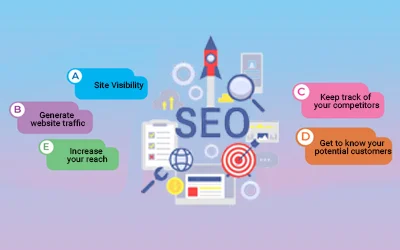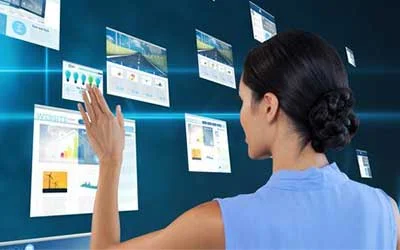You may have heard rumblings about a new technology called the Visual Positioning System (VPS) that helps pinpoint location and direction using just camera images. In this post, we'll explain the innate genius yet intuitive logic behind VPS in simple terms - no fancy jargon!
So, let’s start with what is Visual Positioning System?
Definition - Visual Positioning System (VPS)
Visual Positioning System (VPS) refers to a category of advanced positioning and navigation technologies that determine the precise locations and orientation of devices, vehicles, or other objects using camera imagery and computer vision techniques.
VPS is emerging as a viable augmented reality alternative to satellite-based positioning systems like GPS for use cases requiring high indoor accuracy, orientation capabilities, or positioning in environments where satellite signals are unavailable.
As VPS technology matures, it promises to transform industries including transport, logistics, marketing and emergency response by providing robust and dynamic positioning capabilities not possible previously.
In this in-depth guide, we dive deeper into various aspects of the visual position system:
How Does Visual Positioning System (VPS) Work?
How visual positioning system works? Think of those phone apps that can name a catchy tune playing in a cafe just by listening via the microphone. VPS in Google Maps works similarly but with camera vision instead of sound!
VPS digitally processes images taken by a camera to identify unique matching patterns from a database of pre-captured photos mapped to known locations. By comparing real-time scenes with these reference snapshots, devices can determine precise indoor positions.
Let's break down how visual positioning system works step-by-step:
- First, Explore and Photograph New Spaces. Special teams survey target areas like malls or factories thoroughly to take tens of thousands of photos - cataloging little details of textures, corners, and light fixtures from every inch. Each photo also registers exact GPS coordinates or locations like "3rd Floor, 2nd Corridor, 4th Door on Left".
- Store Photo Database with Tags. Think of this photo collection as a visual map containing fingerprints that uniquely characterize different spots, just like no two human fingerprints are identical. State-of-the-art programs can rapidly search databases with millions of such images.
- Scan Surroundings to Trigger Memories. Now, when people navigate here holding VPS phones, built-in cameras automatically keep scanning their surroundings. Software quickly matches patterns, lines, and visual cues from continuous live views to those stored reference pictures.
- Pinpoint Position Like Our Brain Does. If the camera sees a familiar flower pot, wall poster, and sofa arrangement, VPS knows it matches earlier mapped images of the 2nd-floor recreation room! Almost like our brains do when we recognize rooms from visual cues. From prior tagged locations, VPS can pinpoint orientation and positioning in the area.
Cool right? The visual positioning system in Google Maps mimics human-like scene recognition to unlock new location-aware features!
What Special Powers Does VPS Give Over GPS?
What is VPS vs GPS? Global Positioning System (GPS) and Visual Positioning System (VPS) are two technologies used for locating position, but have some key differences:
- GPS utilizes satellite signals, while VPS relies on camera images and visual analysis.
- GPS works reliably outdoors but struggles indoors or in areas where satellite signals can't penetrate. VPS excels in indoor localization or GPS-denied areas.
- GPS hardware is generally cheaper, while VPS systems require more complex camera rigs and computing resources for visual processing.
- VPS provides orientation as well as location information. GPS gives location only.
- The accuracy of consumer GPS units is around 5 meters, while VPS can achieve accuracy under 30 cm in optimal mapping conditions.
So, in the summary of what is VPS vs GPS, GPS is great for outdoor use cases, while indoor positioning requires visual position system technologies. The two can be combined for optimal cross-environment positioning.
Fun And Practical Applications of Visual Positioning System
Visual Positioning System in Google Maps isn't just for directions. They're like smart eyes that make things fun and helpful. They turn gaming into a real-life adventure, help you find stuff in stores, guide you indoors, and even teach you cool things at museums. They use your phone's camera to make life more fun and easier.
The accuracy and dynamic localization abilities of VPS in Google Maps create diverse use case possibilities:
- Self-driving vehicles can plot courses leveraging VPS-derived maps identifying landmarks and objects instead of only GPS coordinates.
- Retail apps tap into in-store VPS to push instant offers to you for items near your shelf area you may love but miss.
- Doctors wearing VPS-informed headsets during complex surgeries can summon critical medical imagery or guidance locked to patient anatomy in view.
- Firemen entering unfamiliar building sites can gain instant spatial orientation and pinpoint locations of casualties using VPS systems.
What Challenges Have Come Up with Slow VPS Adoption Currently?
Finding out why not everyone uses Visual Positioning Systems (VPS) shows us the problems that are stopping it. Some things, like technology limits or people not being used to it, make it hard for VPS to be everywhere. Let's see why VPS adoption isn't happening as fast as we might expect. VPS also continues tackling some teething issues:
- Needing lengthy mapping of sites beforehand demands time and access. Automated camera drones flying predefined routes can greatly speed this up.
- Visual clues degrading temporarily, like when fog machines installed for concerts activate, can momentarily throw off positioning accuracy. Hybrid solutions with sensors like gyroscopes fill such perception gaps.
- Privacy issues arise with continuous camera monitoring needed. Secure computing protocols and strict regulations on storing only non-identifiable visual data maintain public trust.
However, companies like Apple and startups with bright engineers are actively problem-solving these while enriching VPS capabilities.
When Can We Expect Visual Positioning System to Become Universal?
Given the technology maturity trajectory, in the next 5 years, the Visual position system promises to make indoor spaces as intuitively navigable as GPS made the outdoors. VPS may soon move from technical conferences to manifesting in everyday mobiles, wearables, vehicles and appliances needing to interact with environments based on position and orientation.
The applicability spans industries craving spatial intelligence - from entertainment venues delivering interactive mixed-reality experiences to assisted living facilities monitoring elderly residents indoors. Even your next photogenic vacation may see you capturing not just selfies but environment maps buildable into full 3D walkthrough memories!
Conclusion
As we have explored what is Visual Positioning System through several everyday examples, it brings accessibility to precise and dynamic indoor positioning. Also, from what is VPS vs GPS, we learned GPS profoundly impacted activities relying on outdoor navigation, while VPS promises a similar revolution indoors. VPS enhances workflows from warehouses to operating rooms, leveraging situational intelligence.
The endless aisles of possibilities will only expand as the core technologies get woven firmly into daily consumer and enterprise infrastructure. The visual Positioning system in Google Maps seems poised as the next seminal wave of innovation that makes accurate location and orientation intelligence ambient like electricity.










